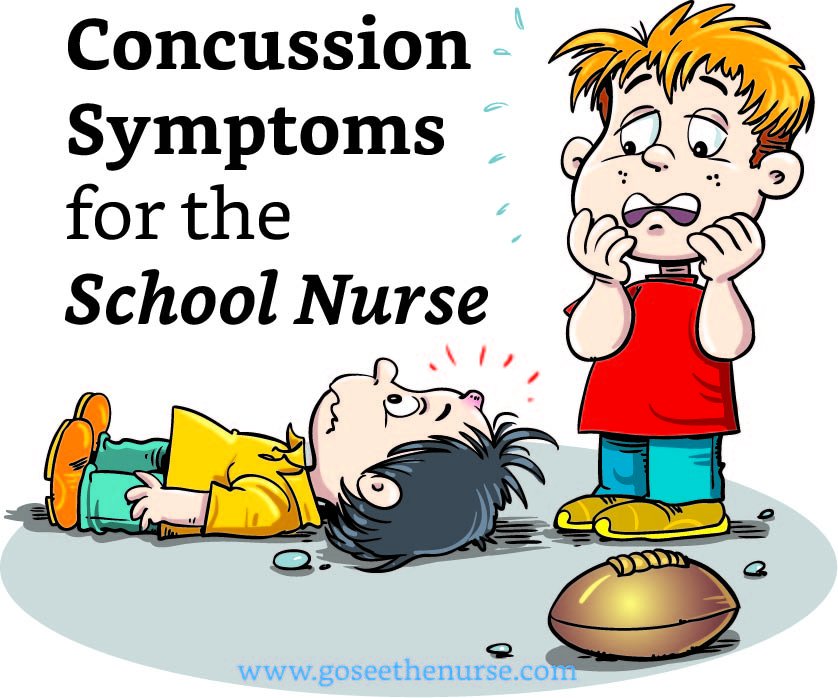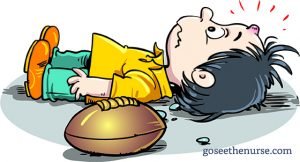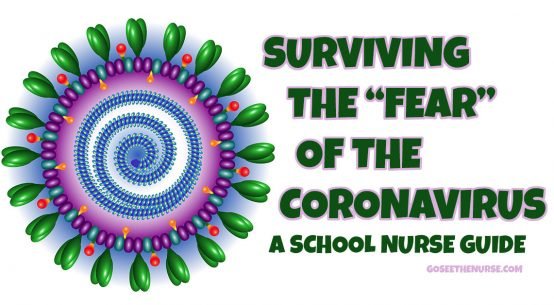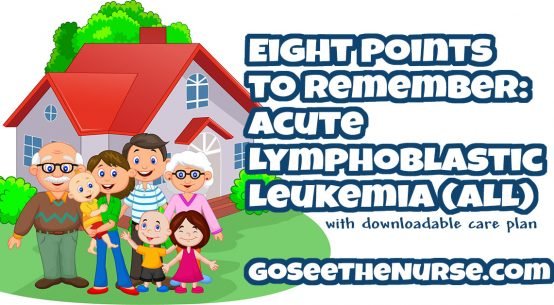
“Whoa, man! What happened to you? Did you get in a fight with a ninja?” A little kindergartner enters the health office with a huge goose egg on his right forehead. “I bet you licked him, didn’t you?” Of course, without a frame of reference, the kinder looks at me sideways, kinda like a puppy who just heard a funny, squeaky sound.
“What’s that sound? You hear it? It’s a funny, squeaky sound.” – Aunt Bethany
It’s obvious that this child has hit or been hit in the head by something. And figuring out what “that” is takes a quick (yet temporary) backseat to performing the assessment to identify what the actual injury is and its severity. Let’s step back and review what that goose egg is telling us.
The goose egg is secondary. What I mean is: it’s on the outside of the skull. Swelling and bruising there, though a concern, is less of a concern than what may be going on within the skull itself. Swelling on the outside has room to move around and show off. A big ol’ goose egg is usually what makes the bump to the head “look” bad. Swelling on the inside is what makes a bump on the head…bad. A “goose egg” inside the skull is difficult to determine, given the short period of time and limited assessment tools for the school nurse. Rule number one when a child reports they have “bonked my head” is to assume there may be a concussion. That goose egg is telling us to do two things: that we need to treat the outside stuff (what we can see) and assess for the inside stuff (the stuff we can’t see and that may show up hours later).
What is a concussion?
A concussion is a brain injury that causing the brain to behave somewhat abnormally. It’s like dropping your laptop, and the screen freezes until you reboot it. The brain has just been “jolted” inside a closed cavity: the skull. And a concussion doesn’t always have to result from a bump to the head. Even falling and landing on your bottom or back can result in a concussion. After all, the fall is not what is causing the problems; it’s the sudden stop. This sudden stop causes to brain to move toward the direction of fall and then “bounce” back from that side of the skull and slam into the other side, kinda like a rubber ball. Often if you hit the back of your head on the ground, the front of the brain is injured.
Interesting:
In a year, traumatic brain injuries complications will cause the deaths of 3,000, hospitalize 29,000 and result in 400,000 ER visits. Get this: these numbers are for children younger than 15 years old.
Boys are twice as likely to suffer a traumatic brain injury than girls.
In our public schools, 13,000 children will end up needing health services beyond what we school nurses can offer (Youse, Le, Cannizzro and Coelho, 2002).
Individuals with Disabilities Education Act defines a traumatic brain injury as “…an acquired injury to the brain caused by an external physical force resulting in total or partial functional disability or psychosocial impairment, or both, that adversely affects a child’s educational performance…”
Bumps to the Head vs. Head Injuries
Because we are just reading an article and have lots of time to ponder stuff, let’s consider first that there is a difference between a bump to the head and an actual head injury. Most of what you see in your offices, on the playground, and in the school building are bumps to the head. If I bend over to put a dish in the dishwasher and, while coming up for the next dish I bump my head on the opened cabinet door, I likely have sustained a “bump on the head.” There are more assessment finding necessary to determine that an actual head injury has occurred. After all, the bump that I got when I stood up may very well be an actual head injury. Likely I will shout, “Papapishu!” and rub the spot on my head that smarts. But, what if weird concussion symptoms (that we’ll discuss later) began to show up? As a school nurse who is responsible for the little people, what steps will we take to get a better idea of what’s going on inside that little person’s head, and what steps to take if we feel something is wrong?
“I bonked my head.”
You will either see the child come to your office crying or even giggling about the head bump, or you may be called to the location where the incident has occurred because the teacher or other faculty member feels the child should not be moved (good teacher…wise teacher). If a child has come to your office and reports having bumped (or bonked) their head (without bleeding or other open areas), have the child sit and hold an ice pack on the area. Sitting still is the best bet. Some of those kids can really “take one” to the noggin and be moving around like nothing happened. Nonetheless, they could be hurt in less-than-obvious places, despite the child’s demeanor or how they present.
If the child is on the playground or in the classroom when a bump to the head occurs, you may be called to the location. Even before assessment and first aid are initiated, your goal is to minimize head movement. All suspected head injuries (even those who show up to the health office) should be treated as though there is an injury to the neck or spinal cord, pure and simple. If you think for even a moment that the child has some spinal involvement, brace that little person’s head with your hands or by squatting over their head and using your inner thighs to support their little head. There are other measures, but these two will get you started.
Assess for scrapes, cuts, red areas, and developing goose eggs. Many times, the child will have forgotten where on his or her head they were bonked. This could be good or bad. The bump may have been more dramatic rather than traumatic…emotionally and somewhat physically…and the pain and emotions have subsided during the walk to the health office —or that forgetfulness may indicate something more significant. Nonetheless, perform a neuro check and assess the area (or areas if the child cannot remember where they hit their head).
How to Perform a Neuro Check
1) Initially you will be assessing the child’s level of consciousness.
- Normal: Fully Conscious – Awake and aware. Fully oriented.
- Concerning: Lethargic – Responding slowly to verbal cues.
- Very Concerning: Obtunded – Very drowsy. Responds to touch.
- Very, Very Concerning: Stupor – Responds only to pain.
- Very, Very, Very Concerning: Coma – The child is not waking up.
2) Check the pupils. Here’s an acronym: PERRLA – Stands for Pupils are Equal, Round, Reactive to Light and Accommodation. What does PERRLA tell the school nurse? Simple: It may tell us if that bump on the head was severe enough to cause damage to the optic nerve. If so, that bump on the head is more like a head injury. Eyes are very complex organs, as are the nerves that control them. A pupillary response test serves as a window into that child’s central nervous system. Keep in mind: an abnormal test cannot be definitive as to an actual head injury. However, it signals you, the nurse, to the possibility that something is not right.
3) Assess for facial symmetry. What I mean is: is everything equal on both sides of the nose. Have the child smile and lift his or her eyebrows like Charlie Chaplin (what do you mean, you don’t know who Charlie Chaplin is??). If things are not even-Steven, this will add to your suspicions list.
4) If the child is fully conscious or even lethargic, check the hand grips.
- Normal: Are they equal and strong?
- Concerning: Is one grip stronger than the other?
- Very Concerning: Maybe they can’t grasp at all.
5) How’s the child’s speech?
- Normal: Clear and telling you all about the bonk on the head.
- Concerning: Slurred speech. (Then again, younger and even some older children may have a bit of a speech impediment).
- Concerning: Rambling. They may go on and on while telling you the story of how they bonked their head. But rambling and not making any sense “tells us” a different story.
- Very Concerning: Can’t get the child to talk.
6) Are they moving around?
- Normal: It’s good if the child can move all their extremities. And, despite your instructions to sit still, they may be moving all about trying to act out their head-bonk experience.
- Be concerned if the child can move only his or her arms.
- Be concerned if the child can move only one arm, one leg, or only the extremities on one side of their body.
- Be very concerned if there is only unnatural movement to the extremities.
7) Have the child stick his or her tongue out at you. They will have big fun with this. And let them have fun. What we’re checking is to see if there is any sideways deviation. If they try to stick out their tongue straight and it is pointing either slightly left or slightly right, something may be wrong (“may” being the key word).
8) The child may vomit. With that being said, I have seen nervous children vomit simply from being so “worked up” that they “lose their lunch.” Vomiting after a bump on the head may be just the emotional trauma of getting their bell rung. Then again, vomiting may indicate a more serious situation. Make note of it.
9) Blood mixed with a clear fluid coming from the nose or mouth may indicate a serious injury. Falling and smacking your face on the ground and getting a nosebleed is very possible. However, if you notice a water-like substance coming from the nose as well, this may not be post-nasal drip. To put it in laymen’s terms: it’s probably not snot. It may be cerebrospinal fluid. Cerebrospinal fluid (CSF) bathes the brain and is contained within a lining around the brain. That lining is called the dura. If a skull fracture occurs, this clear fluid will drain out of any orifice it can find. It may come out of the nose or ear. If you have a handy-dandy little blood glucose machine, check the level. If you see 45–80 mg/dL (maybe ½ of the child’s blood glucose level), you may have a skull fracture (maybe).
Nine and Nine
These nine assessment findings will give you information. With this information and your super power (your nursing skills and years of experience), it will help you make the best decision for the child. Let’s get a bit deeper and sum things up so we can get a clear idea of how to recognize serious concussion symptoms that may indicate a concussion and the need for care:
- Loss of consciousness or responsiveness
- Awake, but lying motionless on the ground or very slow to stand up
- Balance or coordination problems
- Grabbing their head
- Dazed and unable to focus on you
- Confused and unaware of what is going on
- Repeating the same question
- Inability to recall the incident that resulted in the bump to the head
- Just does not “feel right”
These also are nine danger symptoms that may indicate the child needs to be seen by a physician as soon as possible.
- Complaining of neck pain
- Increased confusion and irritability
- Repeated vomiting
- Seizures or convulsions
- Weakness, tingling, or burning sensations in the arms or legs
- Deteriorating state of consciousness
- A severe or worsening headache
- Behavior change that is not normal for the child
- Seeing double (double vision)
Okay. We’ve talked about a whole bunch of stuff. What if we do an assessment, and everything checks out A-OK? We have seen the child, performed an assessment, the ice pack has melted, and it seems to be time to go back to class. What now?
I’d suggest that you give mamma or daddy a call. Give them a call and let them know their child had bumped their head. Tell them all about it because the child sure will that evening and then you’ll REALLY hear about it the next morning (in some cases). The guardian needs to know that there is a “point of reference” if their child has bumped their head. You can’t “see” a concussion. Symptoms may not be present right away. However, hours or even days after the bump on the head, symptoms may show up. They may get home and become irritable because of a headache and show short-temperedness (more so than normal) to the irritating noises from a sibling. The child may get home and fall asleep. What if the parent has trouble waking the child? Knowing that their child has had a bump to the head will help the decision-making process for the parents from a “Let’s wait and see” to a “Let’s go on to the emergency room.” At the emergency room, this information will help the doctor move from “Let’s check the urine and the child’s chemistry” to “Let’s get a CT.”
What-to-Do Steps:
When a child comes into the health office and reports a bump to the head (without abrasion, laceration, or other issues that need tending to (an article for another day), you should have a game plan. Consider your nursing assessment skills as well as your school’s policies and available resources such as a concussion action plan (there are some links coming…)
1) Observe the child for a bit. A minimum of 30 minutes is what I’d suggest. Most of the time you will have to “remind” the child that they are hurt and “that’s why you came down to see the nurse.” But there are the other cases where the child shows up seemingly with a bump on the head but presents with some concerning symptoms after they are sitting still.
2) Call the guardian and send something home with the child with symptoms to watch for. I have created a concussion action plan (actually I sorta, kinda modified someone else’s) and a “symptoms to watch out for” PDF worksheet for download. Nope…won’t cost you anything. All you have to do is sign up for the Go See The Nurse Newsletter or Contact Nurse Kevin with the goseethenurse.com’s contact form, put what format you’d like the download to be in (PDF or ZIP) and I will send you either the PDF of the worksheet or will send you a concussion package in ZIP format of the tools I have found on the Internet from different sources that will help you identify children with concussion symptoms. Worried about spam? Read Nurse Kevin’s solid privacy policy here.
Sign Up For The Newsletter HERE – Contact Nurse Kevin HERE – Privacy Policy HERE
3) Consider a 24-hour break from PE, sports, and active recesses. Let the brain rest.
Sleeping after a bump to the head is A-OK. I’ve gotten the what-for from parents after allowing children to nap after they bump their heads. “…limit activities and allow the brain to rest,” says Laurel Rudolph, M.D., a Marshfield Clinic Sports Medicine physician and concussion expert. “Therefore, sleep actually is good and helps the brain recover.”
Your information is kept private! Here’s my Privacy Statement.
After the Concussion
The child has bumped their head, a concussion has been diagnosed, and the child has returned to school (either the next day or a few days later). What do we do now? It’s my opinion that a multidisciplinary approach should be taken to ensure the child is able to learn and remain safe in the school. Involve not only the teacher in the recovery plan of care, but also the counselor, administrators, PE teachers/coaches, and even your great office and support staff. Persistent symptoms and students that are slow to recover may need Section 504 plans (developed during a quickly organized 504 meeting) to address curriculum and environment modification to promote recovery and learning.
Finally…
Kids will be kids. You’ve bumped your head before, and so have I. It hurts! But we still do the things and perform the activities that resulted in that bump to our melons. Heck, If I’d could get a buck for every time I busted my head…well…never mind…I’d still be a school nurse and working for a living. The point is: we want the kids to play on the playground, participate in sports and other active school activities, and test their environments and learn from what that environment will and won’t let them do. After all, Sir Isaac Newton got his head bonked by an apple and learned a bunch of stuff from that ordeal. And the kids will, too.
Thanks for reading,
Nurse Kevin

Technical Edit: Denise Driver, BSN, RN, NCSN, PHN
Edited: J. L. Walker, M.A.
Links of Interest:
http://physicians.cattonline.com/scat/ (A SUPER COOL online tool)
https://www.webmd.com/brain/tc/traumatic-brain-injury-concussion-overview
http://www.mayoclinic.org/diseases-conditions/concussion/symptoms-causes/syc-20355594
https://en.wikipedia.org/wiki/Concussion
https://www.cdc.gov/headsup/index.html
https://www.cdc.gov/headsup/pdfs/schools/tbi_factsheet_nurse-508-a.pdf (Link to PDF)
https://www.cdc.gov/headsup/pdfs/schools/tbi_returning_to_school-a.pdf (Link to PDF)
https://www.ncbi.nlm.nih.gov/pubmed/23600095
https://www.carrollk12.org/admin/researchaccount/Documents/Concussion%20Brochure.pdf (Link to PDF)
http://images.pearsonclinical.com/images/PDF/Webinar/AcademicAccommodationsandTransitionRSM.pdf (PDF of a PowerPoint presentation)
https://www.marshfieldclinic.org/news/cattails/2014-winter-cattails/Medical-myth-busters-concussions
http://dhhs.ne.gov/publichealth/ConcussionManage/Pages/cr00.aspx
Disclaimer: I am a Registered Nurse and not allowed to diagnose or treat beyond the limitation set by regulatory and licensing agencies such as the boards of nursing. It is your responsibility to research this material to determine its validity and provide cares based on the physician’s direction and your school district’s policy. Do not provide any cares suggested in this article without seeking physician’s direction and parental / guardian direction.



